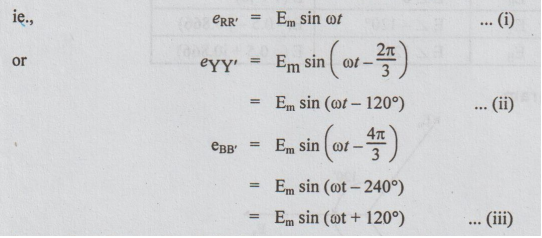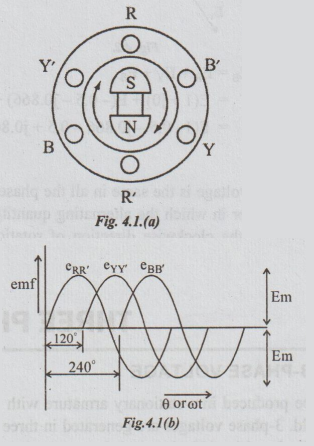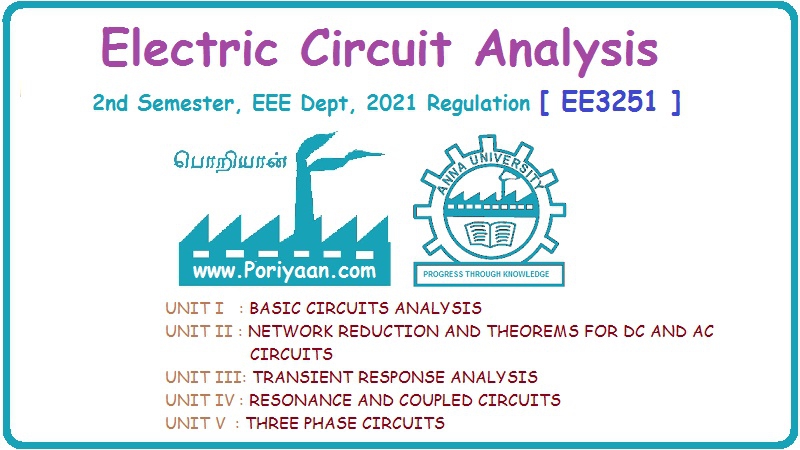Electric Circuit Analysis: Unit IV: Three phase circuits
Generation of 3 Phase Voltage
The 3-phase voltage can be produced in a stationary armature with rotating field or in a rotating armature with a stationary field. 3-phase voltages are generated in three separate but identical sets of windings or coils which are displaced by 120 electrical degrees in the armature.
Unit – IV
THREE PHASE CIRCUITS
GENERATION OF 3-PHASE VOLTAGE
The
3-phase voltage can be produced in a stationary armature with rotating field or
in a rotating armature with a stationary field. 3-phase voltages are generated
in three separate but identical sets of windings or coils which are displaced
by 120 electrical degrees in the armature. Hence, the voltages generated in
them are 120° apart in time phase. This arrangement is shown in Fig.4.1(a).
Here, RR' constitutes one coil (R-phase); YY' another coil (Y-phase) and BB'
constitutes the third coil (B- phase). The field magnets are assumed to be
rotating in clock-wise direction.
The
voltages generated by a 3-phase alternator is shown in Fig.4.1(b). The three
voltages are of the same magnitude and frequency. But they are displaced from
one another by 120°. The voltages are assumed to be sinusoidal. Counting the
time from the instant when the voltage in phase-R is zero, the equations for
the instantaneous voltages of the 3-phases are expressed as below:

At
any given instant, the algebraic sum of the three voltages is zero. It can be
proved by adding the above three equations.

Electric Circuit Analysis: Unit IV: Three phase circuits : Tag: : - Generation of 3 Phase Voltage
Related Topics
Related Subjects
Electric Circuit Analysis
EE3251 2nd Semester 2021 Regulation | 2nd Semester EEE Dept 2021 Regulation
